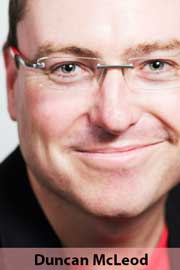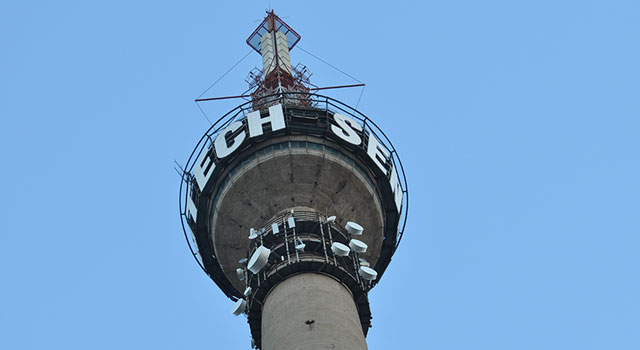 South Africa is taking concrete steps towards introducing digital radio broadcasts using a standard known as DAB+, with a trial planned for 2014. The move will usher in greater competition in the radio sector, with digital eventually likely to replace the familiar FM and AM dials.
South Africa is taking concrete steps towards introducing digital radio broadcasts using a standard known as DAB+, with a trial planned for 2014. The move will usher in greater competition in the radio sector, with digital eventually likely to replace the familiar FM and AM dials.
Radio broadcasters, led by the National Association of Broadcasters (NAB) and the Southern African Digital Broadcasting Association (Sadiba), are planning a trial network next year — it’s scheduled to be launched in February 2014 and to run for 12 months — to understand the complexities around the technology and how best it can be introduced commercially to South African audiences.
State-owned signal distributor Sentech has agreed to provide the DAB+ signal free of charge to radio stations that want to participate in the trial, which will take place in Gauteng using high-powered transmitters on the Sentech tower in Brixton and on the Kameeldrift tower outside Pretoria.
Industry players, including sector regulator Icasa, met at a high-level workshop in Johannesburg this week to discuss how the digital audio broadcasting (DAB) standard — and its successor, DAB+ — were introduced in markets around the world and how best to approach its introduction here.
The country has been dabbling with DAB since the late 1990s, but hasn’t made much progress in introducing commercial services, mainly because the industry has been tied up in the migration from analogue to digital terrestrial television. But this week’s workshop, hosted at the SABC in Auckland Park, appears to have given fresh impetus to the process. “We should not wait for television [migration],” says Sadiba secretary Gerhard Petrick. “We have the momentum now and we should move with it.”
DAB has been introduced in a number of countries around the world as a complement — at least for now — to the analogue FM and AM bands. Some countries, like Norway — which was the first country to launch a commercial DAB radio station — plan to switch off analogue radio broadcasts altogether.
Jørn Jensen, president of the WorldDMB Forum, an industry body responsible for developing DAB, DAB+ and other digital broadcasting standards, told this week’s workshop that Norway plans to switch off the FM dial in 2017. Denmark has earmarked 2019 as its switch-off date.
UK regulator Ofcom, meanwhile, is expected to make an announcement in December about its switchover plans. According to Jensen, 22m adults in Britain have access to DAB radio, with 94% of the population covered with digital radio signals.
In Australia, 60% of the population is covered, with 1,6m people, or 12,6% of the population, listening on a DAB+ device each week, says Kathryn Brown, head of strategic development at industry group Commercial Radio Australia. She explains that improved sound quality, coupled with more radio stations for consumers to choose from, has driven adoption in Australia, although the country has not yet set a date to terminate FM broadcasts.
Dave Cherry, who chairs the task group managing the planned NAB and Sadiba DAB+ trial, says South Africa faces a number of challenges in introducing digital radio, not least of which is the fact the migration to digital television is taking longer than expected.
Ideally, broadcasters should use the trial — which will consist of up to 20 public service, commercial and community stations — to begin marketing digital radio to consumers ahead of a commercial launch at the end of the one-year trial period. However, because television broadcasters are still likely to be using the spectrum that has been set aside for commercial DAB+ radio when the trial ends, they can’t begin to market the technology yet. However, enthusiasts keen to check out digital radio during the trial period will still be able to buy DAB+ receivers and tune in. Those receivers, which currently cost US$20 and up, will work when digital radio is launched commercially.

Cherry believes the introduction of DAB+ can’t come soon enough given that the FM dial is congested, especially in South Africa’s main urban centres. After television is migrated to digital, Icasa intends licensing two chunks of spectrum — called muxes — that will allow for up to 40 digital radio stations, opening the market substantially to new competition.
Meanwhile, a separate trial is planned for another digital radio technology known as Digital Radio Mondiale, or DRM. If DAB+ is the replacement for FM, DRM can be seen as the successor to medium-wave broadcasts. The trial, says Cherry, will be separate from the DAB+ one. However, a big challenge facing DRM is that receivers, particularly for cars, are few and far between.
Getting consumers to switch to digital radio is probably going to be the biggest challenge. Key here will be wider choice, especially since South Africa is likely to be far less aggressive in switching off the FM dial as countries in Europe have been.
Still, it’s an exciting time for radio in South Africa and the development looks set to foster a more robust and competitive industry. What’s not to like?
- Duncan McLeod is editor of TechCentral. Engage with him on Twitter
- This column was first published in the Sunday Times




